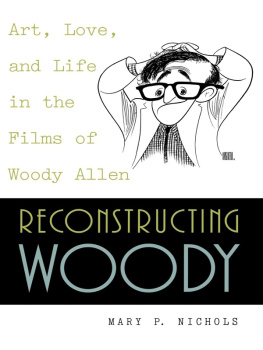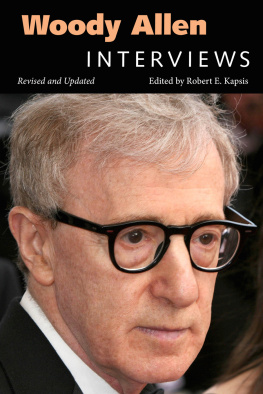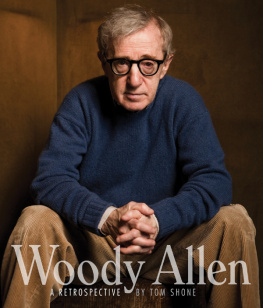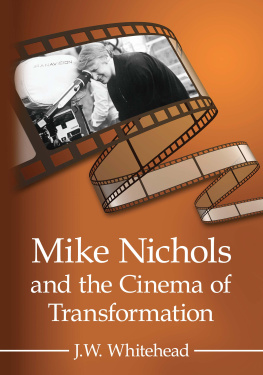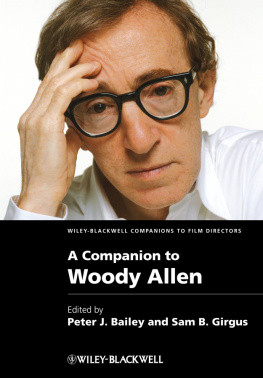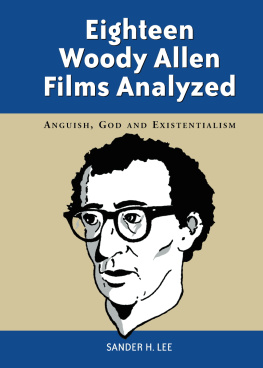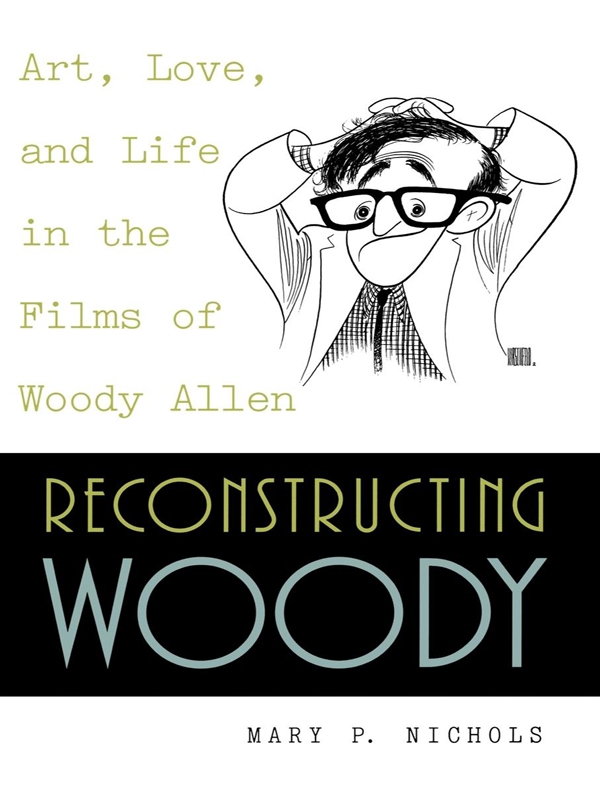Mary P. Nichols received her doctorate in political science from the University of Chicago. She is professor of political science at Fordham University. She has edited Readings in American Government (Dubuque: Kendall/Hunt, 1990) and has published widely in ancient and modern political thought, including Socrates and the Political Community (Albany: SUNY Press, 1987) and Citizens and Statesmen: A Study of Aristotles Politics (Lanham, Md.: Rowman & Littlefield, 1992).
Bibliography
Allen, Richard. Crimes and Misdemeanors. Cineaste 17 (1990): 4446.
Allen, Woody. Four Films of Woody Allen: Annie Hall, Interiors, Manhattan, Stardust Memories. New York: Random House, 1997.
. Three Films of Woody Allen: Zelig, Broadway Danny Rose, The Purple Rose of Cairo. New York: Random House, 1987.
. Side Effects. New York: Ballantine Books, 1975.
. Without Feathers. New York: Ballantine Books, 1972.
Ansen, David. Dying for a Broadway Hit. Newsweek (October 24, 1994), 75.
Bakhtin, Mikhail. The Dialogic Imagination, ed. Michael Holquist. Austin: University of Texas Press, 1981.
Becker, Ernest. The Denial of Death. New York: The Free Press, 1973.
Bergson, Henri. Laughter. In Comedy, ed. Wylie Sypher. Garden City, N.Y: Doubleday, 1956.
Bernard, Jami. Woodys Dirty Harry. Daily News (December 12, 1997), 69.
Bjorkman, Stig. Woody Allen on Woody Allen. London: Faber and Faber, 1994.
Blake, Richard A. Woody Allen: Profane and Sacred. Lanham, Md.: Scarecrow Press, 1995.
. Womens Wear. America (December 17, 1988), 517 and 526.
Bloom, Allan. The Closing of the American Mind. New York: Basic Books, 1987.
. Interpretive Essay, to The Republic of Plato, trans. with notes and interpretive essay by Allan Bloom. New York: Basic Books, 1968.
Borowitz, Eugene B. Heeding Ecclesiastes, At Long Last. The New York Times (October 15, 1989), 16.
Bray, Christopher. Woodys Genuine Froth. The Times Literary Supplement (January 28, 1994), 17.
Brodie, Douglas. The Films of Woody Allen: Revised and Updated. Secaucus, N.J.: Citadel, 1991.
Canby, Vincent. Woody Allen Journeys from Page to Screen. New York Times (March 17, 1985), 1920.
. The Humor, Hostility, and Mystery of Woody Allen. New York Times (September 28, 1980), 21 and 39.
Combs, Richard. Woodys Wars: Crimes and Misdemeanors. Sight and Sound (Summer, 1990), 2078.
. Chameleon Days: Reflections on Non-Being. Monthly Film Bulletin (London) (November, 1983), 29596.
. Zelig. Monthly Film Bulletin (London) (November, 1983), 294.
Denby, David. Woodys Poison-Pen Letter, New York (October 13, 1990), 6163.
. Beyond Good and Evil. New York (October 23, 1989), 12428.
Dowd, Maureen. Grow Up, Harry. New York Times (January 11, 1998), 9.
Doyle, Arthur Conan. Scandal in Bohemia. In The Complete Adventures of Sherlock Holmes. Garden City: N.Y: Doubleday, 1930.
Dunne, Michael. Stardust Memories, The Purple Rose of Cairo, and the Tradition of Metafiction. Film Criticism 12, no. 1 (Fall, 1987): 1927.
Ebert, Roger. Another Woman, Go Ebert, compuserve.
. Bullets over Broadway, Go Ebert, compuserve.
Erler, Mary. Morality? Dont Ask. New York Times (October 15, 1989), Sec. 2, 16.
Feldstein, Richard. The Dissolution of the Self in Zelig. Literature/Film Quarterly 13, no. 3 (1985): 15560.
Fox, Julian. Woody Movies from Manhattan. Woodstock, N.Y.: The Overlook Press, 1996.
Freud, Sigmund. Civilization and Its Discontents, trans. James Stachey. New York: W W Norton & Company, 1961.
Gilliatt, Penelope. Woody Reverberant. The New Yorker (August 7, 1978), 7678.
Girgus, Sam B. The Films of Woody Allen. Cambridge: Cambridge University Press, 1993.
Gittleson, Natalie. The Maturing of Woody Allen. New York Times Magazine (April 22, 1979), 3037 and 1027.
Green, Daniel. The Comedians Dilemma: Woody Allens Serious Comedy. Literature/Film Quarterly 19, no. 2 (1991): 7076.
Halberstadt, Ira. Scenes from a Mind. Take One (November, 1978), 1620.
Howe, Desson. Deconstructing Woody. The Washington Post (December 27, 1998), D1.

